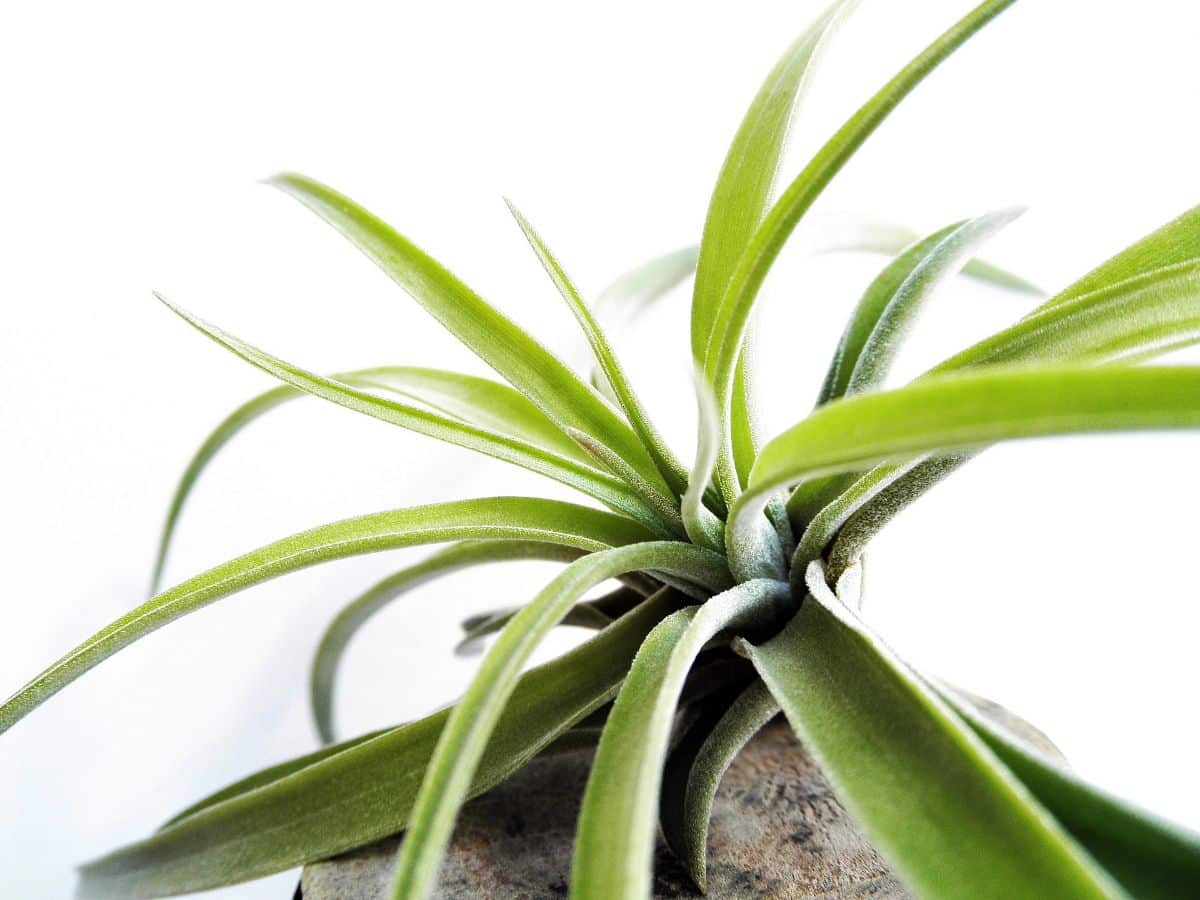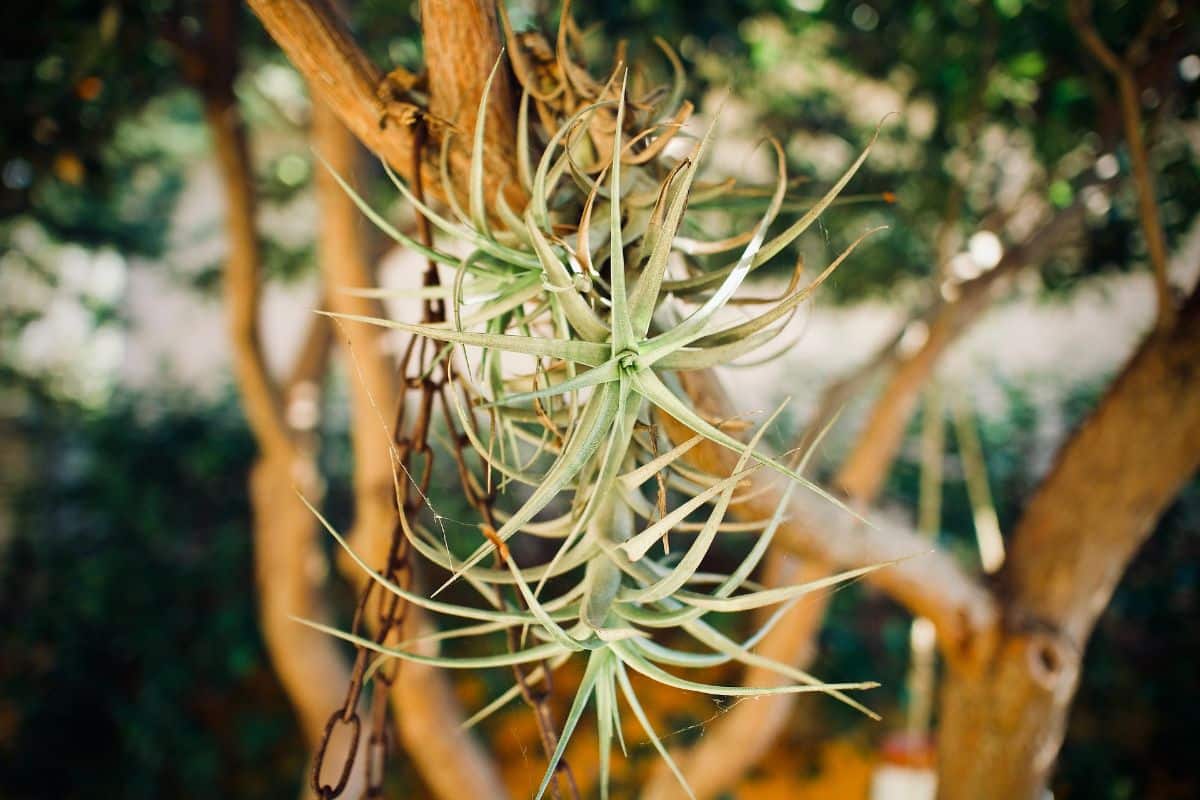
One of the strangest, and at the same time beautiful, plants that you can have at home are air plants. These do not need a pot to have them and yes, they live on the air, or rather on the humidity that is in the homes.
But, when buying one, What should you look at to do it? How to buy them? Are they easy to care for? About all this and much more is what we want to talk about next.
Top 1. The best air plants
Pros
- It comes with support included.
- Total height of 110-170mm.
- Handmade product.
Cons
- Cannot be easily removed from the holder.
- If it grows, the support can be overturned.
selection of air plants
Here we leave you other air plants that you can easily have at home and that you will like a lot when you see how they change.
Tillandsia caput-medusae plant, large size
La tillandsia caput-medusae is one of the most appreciated because of the shape of its leaves and that special shine. You have to be careful as this product also carries shipping costs.
Natural Air Plant Color Red
It is one of the best known tillandsias, Ionantha, and most common. In this case This plant produces purple flowers.
DECOALIVE Set of Two Tillandsias or Air Plants (1 Green and 1 Red)
It is a pack of two tillandsias, one with green leaves and one with red leaves. However, it must be taken into account that the color of the leaves depends on the temperature and lighting, since when they turn red it is because they are going to flower.
Pack 5 air plants tillandsias varied natural air carnation
It is a batch of five tillandsia plants different from each other. these plants they are common species, so it is not possible to choose the varieties that will make up the pack.
Plant in a Box - Tillandsia Plant Mix - Set of 5 - Real Air Plants
It is a set of plants (although later it tells you that the amount is 6 and in the photo there are 6 different ones). They are all different from each other and they can have a size of 5 to 15 centimeters.
Air Plant Buying Guide
Buying air plants is not difficult. You just have to choose the one you like the most and buy it. But it is true that, like other plants, some are more delicate or need conditions that you may not have. Therefore, it is worth taking this into account to know what to do. Have you ever wondered the factors that influence?
Specifically, they are these.
Type
We start with the type and in this sense we can understand it in two different ways. The first is to decide if you want an artificial or natural plant. In other words, if you want a real or fake air plant.
We are not going to deny that finding artificial air plants limits you a lot when choosing, because it is not usual to see varieties in this option, but they have the advantage that, whatever you do, they will not die and decorate, they will decorate the same.
On the other hand, you would have to choose the variety you want of air plant. And there are many, hundreds of them, and each one is different from each other. It is true that many look alike, and are even hybrids between several species, but they change in themselves. There are some that look like bushes, others that are very hard, including the "leaves" they have, others that cascade down... The truth is that you have a choice.
And not only because of the shape, but also because of the type of bloom that they throw at you. The normal thing is that the flowers are purple, but you can also find pink, white, yellow, green...
Size
The next thing you should choose is the size. In any store specializing in air plants, you will see that they sell different sizes, with S being the smallest and XXL being the largest. And they are very big. So everything will depend on the space you have to locate it.
Price
Lastly, you have the price. In general, many of the plants will be around 4-5 euros in small sizes, some even half that. As they go up in size, so do they in price.
For example, some can cost 30 or more euros because they are rare species or of considerable size.
What are air plants?
Air plants, also called tillandsias, are a type of plants that are characterized by They do not need the earth to survive, but they feed on moisture and the environment. In their original habitat they are usually epiphytes, that is, they are anchored to other plants without feeding on them.
These are part of the bromeliaceae family and there are around 650 different species in the world.
Where do air plants grow?
Wondering where air plants grow in their natural habitat? Well, you should know that they live above all attached to other plants, trees, rocks or the sand itself. Its roots, which are tiny, only serve to anchor it but they are not really an element that they use to feed themselves, they do that through the leaves they have.
They originate mainly from Central America and South Africa, from places that are both deserts and jungles, or mountainous and semi-arid areas. In fact, they can adapt very well to any environment you give them.
What care should be given?
Now, what care do they need? As we have told you before, they are plants that adapt to everything. We could say that they are something like SUVs. And it is that they do not need much care to maintain themselves, quite the opposite. If you are new to gardening, or if every plant you touch dies, you should know that with this one everything will be easier.
In general, they will need the following:
- A bright and well ventilated place. That does not mean that it tolerates drafts (which dry out the environment and will make your plant look ugly. But it does need a lot of light, not direct, but as many hours as possible so that it can look beautiful.
- Humidity yes, irrigation... We put it that way because these tillandsias prefer environmental humidity to irrigation. In fact, with irrigation it can happen to you that they rot because water remains between the leaves and is unable to absorb it. Therefore, it is better in this sense to spray water once a week (twice a week if the summer is very hot) and that's it.
- Subscriber. Yes, in this case you have to give it a little fertilizer every so often (at least once a week in summer and once a month in winter). Also in this way it will receive nutrients that, if there are none in your home, will come in handy.
- Pruning. The normal thing is that these plants are not pruned. But beware. They have a limited life, after that type, they die, but before doing so, they reproduce on their own, in such a way that offspring (one at least) come out of the "mother" structure, so when it is bigger you could cut the parts driest of the plant.
Where to buy?

The last thing we have left is to tell you about places where you can buy these air plants. Do you want to know? We have chosen the stores that are most searched for on the Internet but we will also give you another option.
Amazon
on amazon it is where you will find more variety, both in batches and in separate tillandsias. Of course, the price is often a drag because these are more expensive here than if you went to buy them.
Ikea
We have searched for air plants and tillandsias in your search engine, but they have not come up, so we understand that, at least online, they do not have this product in their catalog.
Leroy Merlin
Seven options are what we have found in Leroy Merlin. However, you must look for them like tillandsia, since when we put an air plant these do not come out. Of the options, only four of them are sold by the store, the others are from an external seller (before buying, it is better to see if this one on their website has better prices).
Specialized stores
If you do an Internet search on tillandsias, you will most likely come up with several specialized stores in these plants (and only in these) or that some garden stores have them. They are cheaper than in other places and you can also choose sizes.
Have you decided on your favorite air plants yet?










